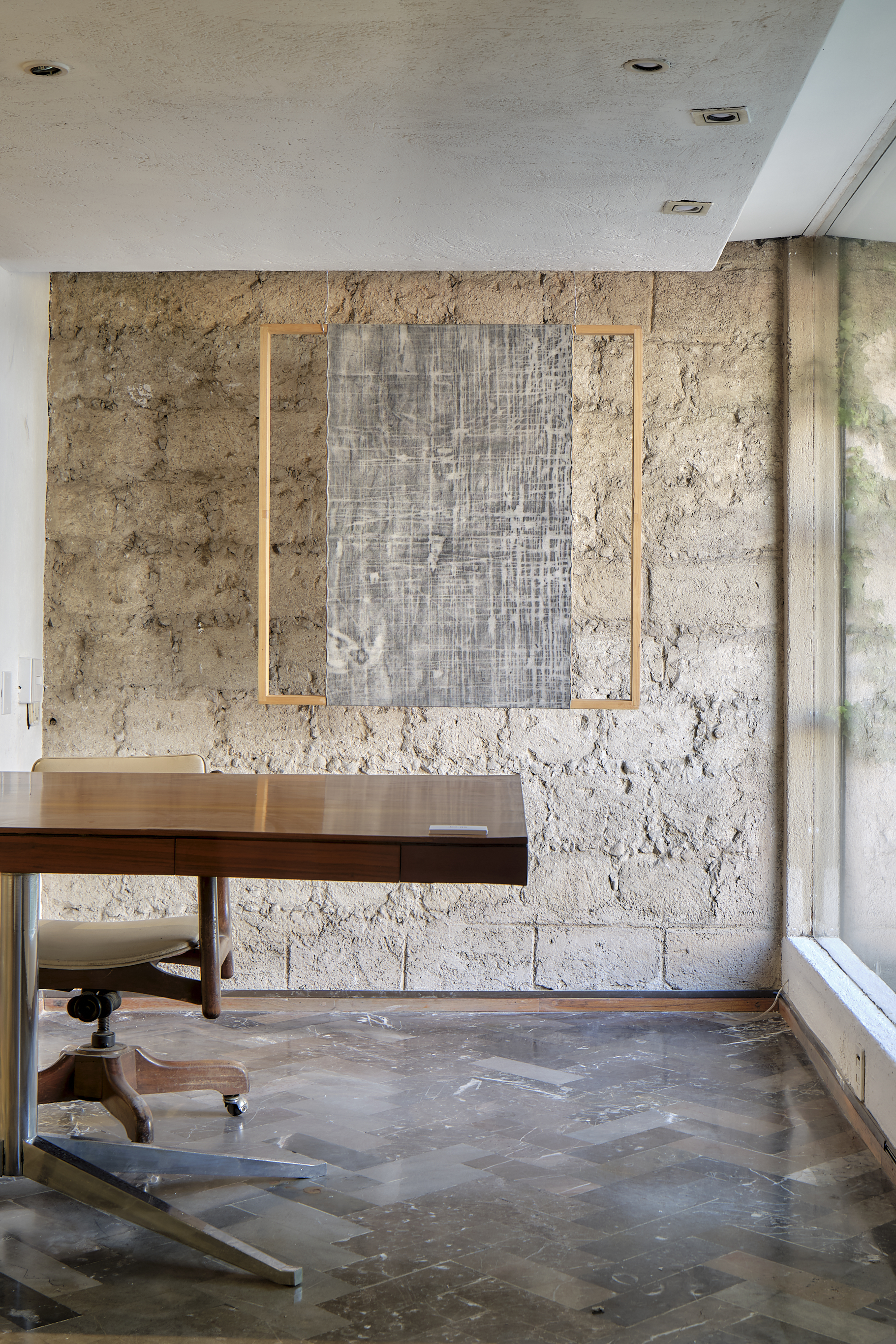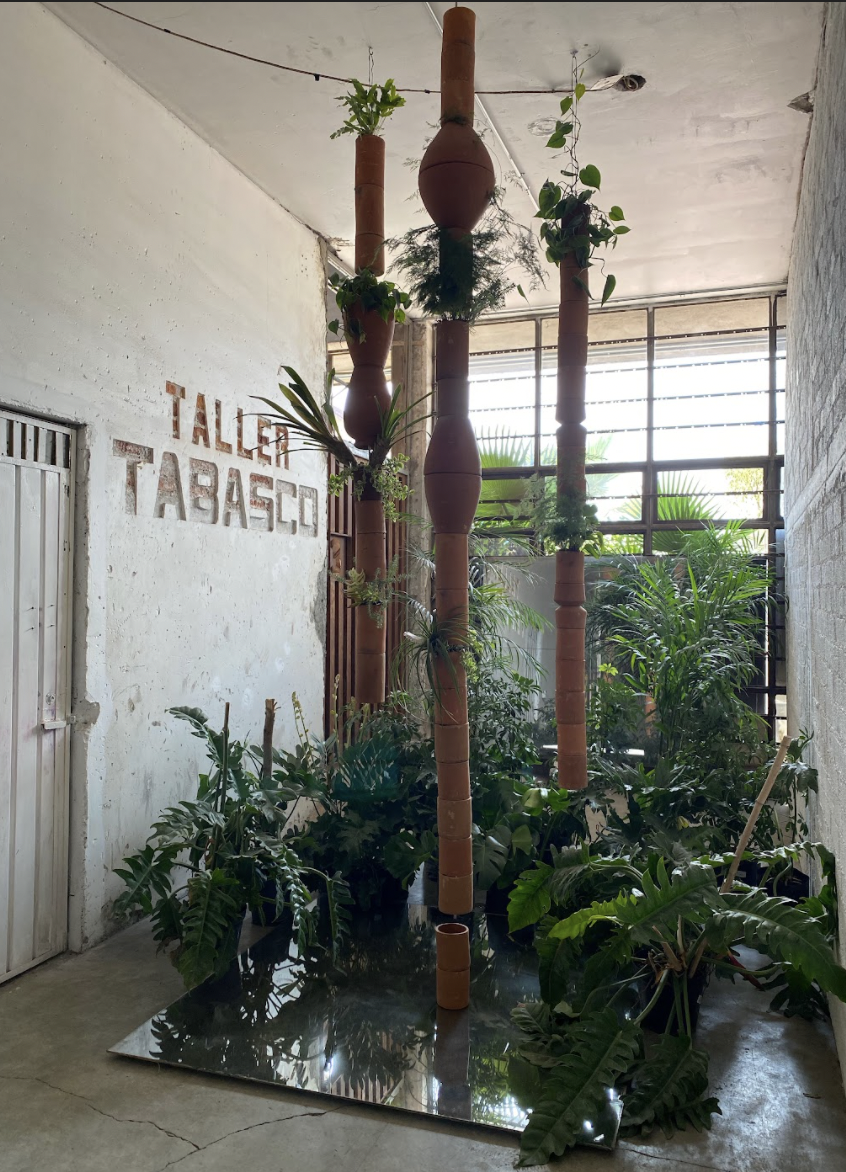VIVARIUM
November 4 - 30, 2021Gobernador José Guadalupe Covarrubias 46, San Miguel Chapultepec
JO-HS is pleased to present its inaugural exhibition VIVARIUM. The exhibition brings together the work of eleven Latin American artists to discourse the questions: What does art need to survive? To survive does art escape the contemporary?
VIVARIUM features work by Alicia Ayanegui, Celeste, Emilio Chapela, Stijn Cole, Carlos García-Noriega, Carla Hernández, Perla Krauze, Alonso León-Velarde, Fernando Ocaña, Miguel Pedroza, and Tania Ximena.






The curatorial project VIVARIUM was first conceived as a collaboration between Brazilian art gardener Andre Feliciano and curator Elisabeth Johs as they pondered the idea of a museum / gallery where art could be sustained rather than left to die and subside. The conundrum of art’s purpose in society brought forward many questions. If art is a mechanism for change through shifting our thoughts, How do we define what art needs to be in order to be alive? How can art be sustained? What does art need to re-generate? What should we ask of art?
A vivarium is a place where one can keep something alive: an ecosystem. VIVARIUM asks: what is art’s ecosystem? (Plato asks a thing: are you alive?, are you a manal? etc. When we see a plant growing in the sunshine, we know that the plant is alive. How can we know if art is alive and growing, or if art is dying? In other words, how can art gain and sustain life?
The exhibition takes us on a journey around the conundrum of art in relation to time. VIVARIUM asks us to shift our thinking from ‘contemporary’ to ‘long term’ and develop a new relationship to time. Cultivating a world based on ‘non-contemporary’ ideas and ‘non-contemporary’ art. Thereby cultivating a long-term mentality to art and the world around us.
So how do we override the value of “contemporary” in the present art? What kind of art can help soften this rigidity to nurture something focused in a long-term mentality? If you block affective understanding or learning, you create truth traps and value rigidity - this is an inability to revalue what one sees because of conditioning to previous values.
In art you MUST rediscover what you do as you go. Rigid values make this impossible. Therefore, art regeneration is about the experience. You must experience one of its three kinds: aesthetic, conceptual and cultural.
The aesthetic experience happens when a work of art provokes a visual sensation that cannot be translated into words; the viewer keeps with them a feeling that’s difficult to explain.
The conceptual experience happens only when a work makes sense if previously translated into words, concepts and ideas; the viewer develops an intellectual interpretation of the work, which becomes art in a Duchampian sense. A cultural experience occurs when a work of art proposes a shift in culture; the viewer can incorporate the proposal and make this shift really happen in their own lives.
![© Carla Hernández.]() The artists in VIVARIUM all work with the concepts of time, nature, movement and material. In this sense, each of the artists mentioned below approach these questions or concerns in a particular way. All of their artwork incites a unique reaction through different methods, mediums and proposals. They depend on the viewer's experience and welcome the process of time in reshaping their work. In VIVARIUM we can find a variety of art; ranging from installation, sculpture, textile, and painting. All of these in constant dialogue, bringing forth questions and solving them at the same time. Like a cycle, always in constant movement. Alicia Ayanegui showcases a series that explores the possibilities that lie in the shadows based on the artist's memories of spaces and objects found in the gloom. With a diffuse and synthetic line, Ayanegui reveals imprecise, illegible and vibrant beings but at the same time passive in a stillness that seems endless. Celeste, the artist duo composed by María Fernanda Camarena and Gabriel Rosas Alemán conducts a negotiation that expands concentrically in order to gradually encompass other collaborators and spectators within the workings of an intimate exchange. The collaborative nature of their artworks manifest as shapes contained in the pictorial field as the outcome of a hybrid and decentered gestuality. Artist Carla Hernandez promotes the creation of natural niches in the middle of Mexico City through the practice of questioning the relationship of nature in everyday life, focusing on the synergy that can develop between a person and plant. Carlos Garcia explores means and forms that project himself in an abstract and geometric way, which in turn is the most natural way of manifesting himself. His work has led him to investigate universal issues such as the extinction of bees, the world situation of refugees, borders, native communities, and sacred rituals where resilience and the spirit of the species is a motivation to continue living and creating. Through his studies of automobility as a psychological condition, artist and car designer Fernando Ocaña raises an anthropological view on the concept of speed and the relationships it has created amongst time, space and the human understanding of these. By blending artifacts of transport with notions of identity and habitat, his art practice analyses the subconscious rhythms involved in the act of motion and the possible meanings of humanity’s seemingly perpetual state of journeying.
The artists in VIVARIUM all work with the concepts of time, nature, movement and material. In this sense, each of the artists mentioned below approach these questions or concerns in a particular way. All of their artwork incites a unique reaction through different methods, mediums and proposals. They depend on the viewer's experience and welcome the process of time in reshaping their work. In VIVARIUM we can find a variety of art; ranging from installation, sculpture, textile, and painting. All of these in constant dialogue, bringing forth questions and solving them at the same time. Like a cycle, always in constant movement. Alicia Ayanegui showcases a series that explores the possibilities that lie in the shadows based on the artist's memories of spaces and objects found in the gloom. With a diffuse and synthetic line, Ayanegui reveals imprecise, illegible and vibrant beings but at the same time passive in a stillness that seems endless. Celeste, the artist duo composed by María Fernanda Camarena and Gabriel Rosas Alemán conducts a negotiation that expands concentrically in order to gradually encompass other collaborators and spectators within the workings of an intimate exchange. The collaborative nature of their artworks manifest as shapes contained in the pictorial field as the outcome of a hybrid and decentered gestuality. Artist Carla Hernandez promotes the creation of natural niches in the middle of Mexico City through the practice of questioning the relationship of nature in everyday life, focusing on the synergy that can develop between a person and plant. Carlos Garcia explores means and forms that project himself in an abstract and geometric way, which in turn is the most natural way of manifesting himself. His work has led him to investigate universal issues such as the extinction of bees, the world situation of refugees, borders, native communities, and sacred rituals where resilience and the spirit of the species is a motivation to continue living and creating. Through his studies of automobility as a psychological condition, artist and car designer Fernando Ocaña raises an anthropological view on the concept of speed and the relationships it has created amongst time, space and the human understanding of these. By blending artifacts of transport with notions of identity and habitat, his art practice analyses the subconscious rhythms involved in the act of motion and the possible meanings of humanity’s seemingly perpetual state of journeying.
Nowadays, we aim to catalogue everything. From a specific style, current, movement, or time period. But what happens if we don’t fall into categorizations and instead adapt an atemporal mentality? If we only focus on a lineal way of thinking, then we are predisposed in thinking there is a beginning and an end to everything. If this is the case, then what will come after “the contemporary”?
VIVARIUM would like to generate a new relationship with time and adapt a cyclical way of thinking. In the case of art, this means that there is no expiration date, and therefore, art never truly dies or fades away. Its essence is always there. It might physically change or be interpreted in a different manner, but that’s part of the cycle. Each person/viewer brings their own subjectivity and context, therefore each experience is completely personal. Art keeps regenerating; old discourses fall while new ones rise; nothing is permanent.
VIVARIUM is an opposition to the idea of a museum, where art in some cases comes to die. In VIVARIUM we want art to live.The Vivarium is a place where one can keep something alive, in a traditional sense an ecosystem. Acknowledging this, curator Elisabeth Johs invites the viewer to contemplate the making and context of art itself in context of the elasticity of time. Grounded in Plato’s principles of Human Virtue, Johs hopes the viewer will slow down and approach the artwork through three fundamental experiences: aesthetic, conceptual and cultural.

